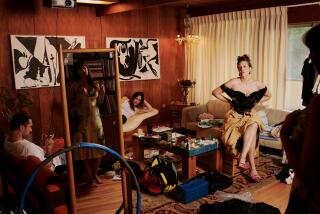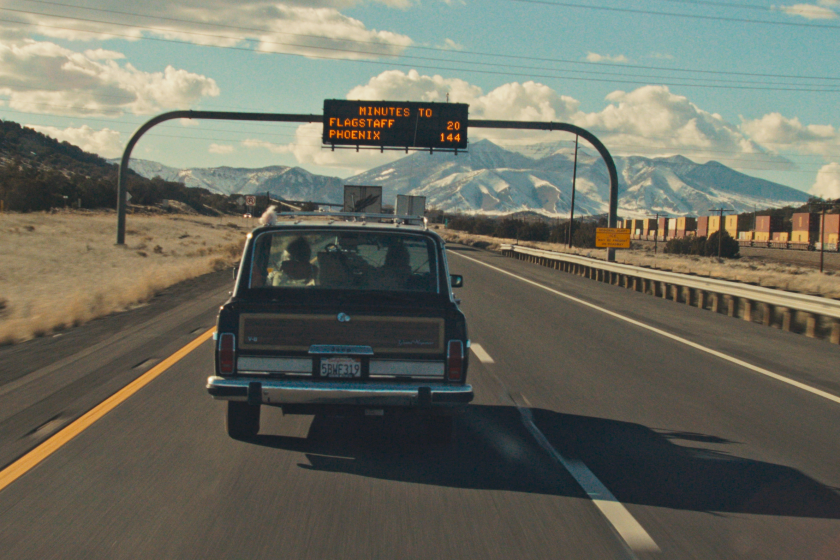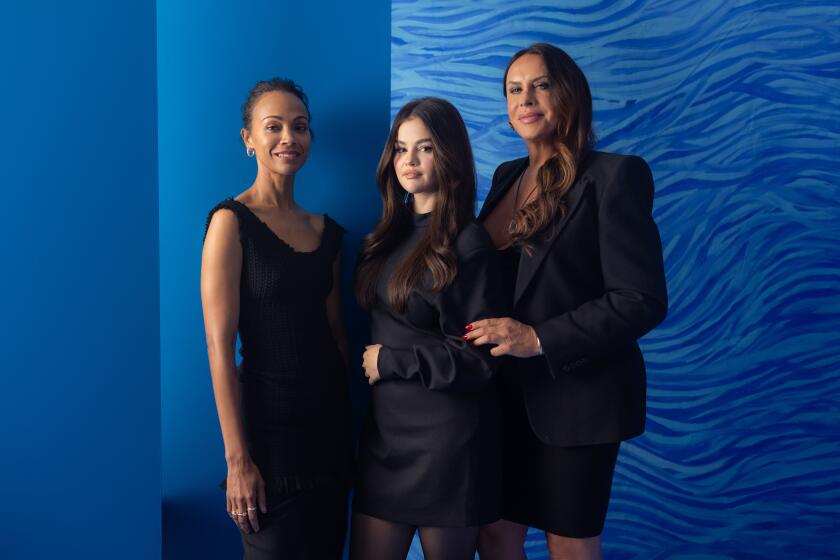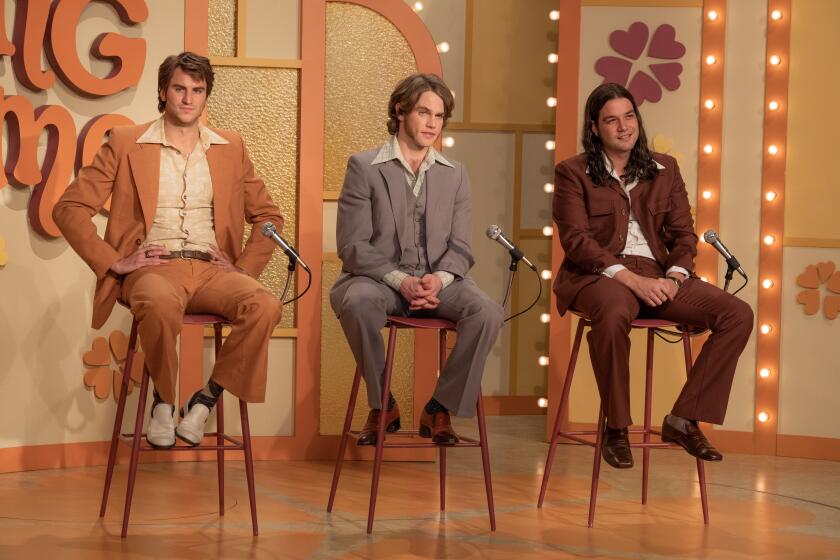‘Queen & Slim,’ ‘Two Popes,’ ‘The Lighthouse’: Visceral character portraits built for two
When it comes to legends, it’s hard to think of two actors more deserving of the title than Anthony Hopkins and Jonathan Pryce — both have been knighted for their contributions to the arts, both have long and storied resumes on stage, film and television. So when Fernando Meirelles began to consider who might be up to the task of portraying modern-day icons of the Catholic Church in his dramatic two-hander “The Two Popes,” the “City of God” director knew exactly where to turn.
Casting Hopkins as the ultra-conservative Pope Benedict and Pryce as the progressive Cardinal Jorge Bergoglio, who later becomes Pope Francis, allowed the filmmaker to humanize both men and gave their back-and-forth an electrifying spark. “I didn’t want a movie about a pope talking to a cardinal, but about two men who disagree on everything, looking for common ground,” Meirelles said of his approach to his new Netflix film. “Jonathan captured the soul of Pope Francis. Hopkins has given Benedict a charisma that we, the general public, may not be aware of, which helped the film.”
For the record:
11:34 a.m. Dec. 9, 2019An earlier version of this post said Richard Linklater, Ethan Hawke and Julie Delpy received Oscar nominations for “Before Sunrise” and “Before Sunset.” The nominations were for “Before Sunset” and “Before Midnight.”
A study of two central figures with opposing points of view, “The Two Popes” is just one of several high-profile two-handers dominating the awards conversation this fall, as writers and directors embrace the format to tell an array of stories. Some are political, others much less so, but all strive to offer visceral character portraits animated by intelligent, insightful, even daring performances.
Indeed, the format is ideal for showcasing intimate character work, with actors, writers and directors having the space to hone in on the way relationships evolve and change over the course of a story.
The academy has long had a soft spot for the two-hander — 1957’s John Huston film “Heaven Knows, Mr. Allison” stranded Deborah Kerr’s nun and Robert Mitchum’s Marine on a South Pacific island during World War II and earned two Oscar nominations (for Kerr, and for Huston and co-writer John Lee Mahin’s adapted screenplay). Michael Caine and Julie Walters were nominated for playing a professor and his working-class student in 1983’s “Educating Rita”; Richard Linklater was nominated alongside actors Ethan Hawke and Julie Delpy for 2004’s “Before Sunset” and 2013’s “Before Midnight,” both of which explored the romance between American Jesse (Hawk) and French-born Celine (Delpy).
If “The Two Popes” personalizes the debate over doctrine and dogma, Universal’s recently released “Queen & Slim” finds a powerful romance in a story that asks important questions about racism and police brutality in modern-day America. The film begins with a white cop stopping a black couple on their way home from an awkward first date. The situation escalates quickly, and soon, the characters are left with no choice but to go on the run. “It’s a two-hander, but it’s also about the people they encounter, how America embraces them or doesn’t embrace them,” said screenwriter-producer Lena Waithe (“The Chi,” “Master of None”).
When Waithe sat down to write the script, she had two prototypes for her protagonists. “I wanted to have her be Malcolm X, and I wanted him to be Martin Luther King, and by the end of the film they would have swapped places,” Waithe said. “Those were my road maps. He is a person who wants to have a simple life, wants to do the right thing, wants to have a family. She’s a person who wants to leave her mark and change things for the better. She’s not turning the other cheek.”
With any project so strongly centered on two characters, casting is key. Once the role of Slim went to “Get Out” lead actor nominee Daniel Kaluuya, Waithe and director Melina Matsoukas felt strongly that they needed a newcomer to play Queen; Jodie Turner-Smith won the part.
“We wanted someone with brown skin — we wanted to really celebrate black skin and black skin being in love and touching each other,” said Waithe, adding of Turner’s audition, “She wasn’t nervous reading with Daniel or in front of us. We realized, that’s who Queen is. She’s not afraid of anyone or anything.”
Similarly, the stars of A24’s hallucinatory 19th-century drama “The Lighthouse,” Willem Dafoe and Robert Pattinson, had an off-screen dynamic that in some ways mirrored their characters’ on-screen relationship. The film, described by director Robert Eggers as a “two-hander about identity,” loosely adapts the story of the Smalls Lighthouse tragedy in Wales, in which two lighthouse keepers, both named Thomas, are marooned after a storm — and only one of them survives. Dafoe plays Thomas Wake, a veteran sailor who mercilessly torments his young apprentice. “Rob’s character is more reticent,” Dafoe said. “He’s more withdrawn. He’s hiding something, and my character … he’s got the speeches, he’s setting the pace.”
Dafoe and Pattinson found their characters’ rapport during a rehearsal period prior to shooting. “Dafoe comes from theater and likes rehearsing,” said Eggers, who co-wrote the screenplay with his brother, Max Eggers. “He was giving 110% every single day. Rob doesn’t come from theater. … He likes to surprise himself on set and wants to keep things bottled up. Having Willem go, go, go was making Rob only more contained. That, of course, works very well for the characters because it’s Willem Dafoe’s lighthouse, he feels comfortable there, he’s in charge. Rob doesn’t feel comfortable there. Certainly, there was a tension there. The camera sees truth. It saw this dynamic.”
While “The Lighthouse” descends into a tale of intense discord and strife, “Two Popes” ultimately tells a story about connection and unity. “There is a very current message on the personal level, which is tolerance,” director Meirelles said. “The film shows the effort it takes to hear who we disagree with. ... At one point, [Benedict] says to the Argentinian Cardinal: ‘I disagree with everything you say, but for some reason, I think this is your time.’”
More to Read
Only good movies
Get the Indie Focus newsletter, Mark Olsen's weekly guide to the world of cinema.
You may occasionally receive promotional content from the Los Angeles Times.










